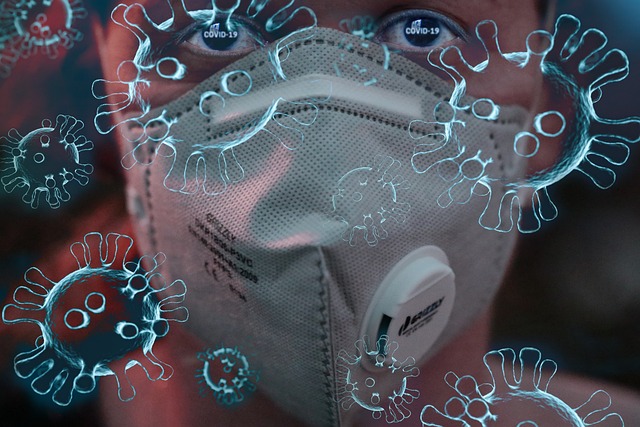[ez-toc]
The world is constantly grappling with emerging threats, and one such threat is the **Marburg virus disease (MVD)**, a highly infectious and deadly hemorrhagic fever with a potential to spark a global pandemic. While not as widely discussed as its cousin, Ebola, MVD possesses similar characteristics of rapid transmission and high mortality rates, making it a cause for significant concern. The virus, first identified in 1967 in Marburg and Frankfurt, Germany, has resurfaced recently, prompting global health authorities to ramp up surveillance and containment efforts.
The **Marburg virus disease** is a formidable foe, leaving a trail of devastation in its wake. It is characterized by severe symptoms including high fever, intense headaches, and bloody diarrhea, often culminating in fatal hemorrhagic manifestations. The virus’s incubation period can vary from a few days to three weeks, making it challenging to track and manage. The primary source of MVD transmission is believed to be fruit bats, specifically the Rousettus aegyptiacus species. However, human-to-human transmission via infected bodily fluids is a significant concern, further amplifying the risk of widespread outbreaks.
Understanding the Potential Pandemic Threat of MVD
A Glimpse into the Past: Tracing the History of MVD
The story of MVD begins in 1967 with two separate outbreaks, one in Marburg and the other in Frankfurt, Germany. The outbreaks were linked to laboratory workers who had been exposed to African green monkeys imported from Uganda. These monkeys were being used for research, and it was through their infected blood and tissues that the virus spread to the human population. The virus was subsequently named after the German city of Marburg, where the first outbreak occurred. The discovery of MVD underscored the importance of stringent biosecurity measures in research labs, as well as the need to remain vigilant about zoonotic diseases.
The MVD Transmission Cycle: How the Virus Spreads
The **Marburg virus disease** is primarily transmitted through contact with infected individuals or contaminated materials. While the virus is believed to originate in fruit bats, it can easily spread to humans through direct contact with their blood, secretions, or organs. Human-to-human transmission occurs through direct contact with infected bodily fluids, such as blood, saliva, vomit, urine, and stool. These fluids can contaminate surfaces, objects, and medical equipment, posing further risks of transmission.
The Symptoms: Recognizing the Warning Signs of MVD
The incubation period for MVD typically ranges from two to twenty-one days. Symptoms of the virus can manifest as a sudden onset of high fever, intense headache, severe watery diarrhea, abdominal pain, and cramping, accompanied by nausea and vomiting. These symptoms may resemble those of other viral illnesses, making it essential to seek medical attention promptly, especially if you have been in contact with someone who has been diagnosed with MVD.
The Severity: Understanding the Risks of MVD
MVD is a serious illness with a high mortality rate. Without prompt medical attention, the virus can progress rapidly, causing severe complications, including internal and external bleeding, organ failure, and shock. In fatal cases, death typically occurs within a week or two after symptom onset.
“Severe hemorrhagic manifestations appear between five and seven days from symptoms onset, and fatal cases usually have some form of bleeding, often from multiple areas. In fatal cases, death occurs most often between eight and nine days after symptom onset, usually preceded by severe blood loss and shock.” – **World Health Organisation**
The Pandemic Potential: Assessing the Threat of MVD
The ability of the **Marburg virus disease** to spread rapidly through human-to-human contact, coupled with its high mortality rate, presents a significant pandemic threat. The risk of a pandemic is heightened by the virus’s ability to persist in the environment for extended periods, making containment efforts challenging. However, unlike more contagious viruses such as COVID-19, MVD outbreaks have been relatively contained, primarily due to the virus’s confinement to specific regions and the prompt implementation of public health measures. The WHO and other global health organizations have been working tirelessly to develop vaccines and treatments, and to improve surveillance and response mechanisms to prevent the spread of MVD.
We also Published
- Morphology and Embryology: Comprehensive Insights
Explore the intricacies of Morphology and Embryology with comprehensive insights. - Volcanoes: Earth’s Fiery Giants – A Comprehensive Guide
Explore the fascinating world of volcanoes, their formation, types, and impact on Earth. Learn about volcanic eruptions, hazards, and the scientific understanding of these geological marvels. - Additive Inverse of an Element: Understanding the Concept
Learn about the additive inverse of an element, how to find it, and its importance in mathematics.
Containment and Prevention: Strategies to Combat MVD
The Role of Global Health Organizations: A Collaborative Approach to MVD Control
The World Health Organisation (WHO) plays a crucial role in coordinating global efforts to prevent and contain MVD outbreaks. The WHO works closely with national health authorities to implement surveillance systems, develop treatment protocols, and provide technical support to affected countries. The organization also conducts research and development activities aimed at improving diagnosis, treatment, and prevention of MVD.
Public Health Measures: Protecting Our Communities from MVD
Effective public health measures are essential to preventing and controlling MVD outbreaks. These measures include:
- Prompt identification and isolation of suspected cases: Early detection and isolation of individuals with MVD-like symptoms can significantly reduce the risk of transmission.
- Contact tracing and quarantine: Tracing contacts of infected individuals and quarantining them for an appropriate period is crucial to prevent further spread of the virus.
- Safe burial practices: Proper handling of the bodies of deceased individuals who have succumbed to MVD is crucial to prevent transmission of the virus to mourners and healthcare workers.
- Improved hygiene practices: Frequent hand washing, using hand sanitizer, and avoiding contact with infected individuals and materials are essential hygiene practices that can help prevent MVD transmission.
- Use of personal protective equipment: Healthcare workers and others caring for infected individuals should wear appropriate personal protective equipment, including gloves, masks, gowns, and eye protection, to minimize the risk of exposure.
- Safe food handling: Thoroughly cooking meat, especially bushmeat, and avoiding contact with wild animals, particularly bats, can reduce the risk of infection.
Treatment: Current Limitations and Future Directions
Currently, there is no specific treatment for MVD. However, supportive care, including providing adequate hydration, pain management, and treatment of symptoms as they arise, can significantly improve the chances of survival. Treatment of co-infections, such as malaria, is also crucial for supportive care. The WHO is actively conducting research to develop vaccines and antiviral therapies for MVD.
“This is why is it important for people showing Marburg-like symptoms to seek care early. Supportive care, including providing adequate hydration, pain management and treatment of symptoms as they arise under professional care remains the safest and most effective way to manage MVD. Treatment of co-infection such as malaria is also crucial for supportive care against MVD,” – **WHO**
MVD: A Global Concern
MVD in India: Assessing the Risk
While no cases of MVD have been reported in India as of yet, the potential for the virus to emerge in the country is a significant concern. The NCDC (National Centre for Diseases Control) is actively monitoring the situation and has issued guidelines for healthcare workers and the public to prevent and manage potential MVD cases. The NCDC has also designated MVD as a risk group 4 pathogen, requiring stringent biosecurity measures for laboratory personnel and those caring for infected patients.
“MARV is classified as a risk group 4 (BSL-4) pathogen and requires high level containment and barrier protection measures for laboratory personnel, as well as for anyone caring for potentially infected patients or deceased bodies,” – **National Centre for Diseases Control (NCDC)**
MVD Outbreak in Equatorial Guinea: A Recent Reminder of the Threat
In February 2023, a major outbreak of MVD was reported in Equatorial Guinea, highlighting the ongoing threat posed by the virus. The outbreak resulted in a significant number of fatalities and caused widespread concern about the potential for the virus to spread beyond the affected region. This outbreak served as a stark reminder of the need for constant vigilance and preparedness, emphasizing the importance of global cooperation in preventing and containing future outbreaks.
MVD in Rwanda: A Recent Outbreak Raises Concerns
In 2023, an outbreak of Marburg virus disease was reported in Rwanda. The outbreak, which claimed six lives, primarily affected healthcare workers. This outbreak underscored the vulnerability of healthcare workers to highly contagious diseases, emphasizing the need for adequate protective measures and training for those on the front lines of healthcare.
Staying Informed and Prepared: How to Protect Yourself and Your Community
Stay informed about MVD and other emerging infectious diseases by following credible sources, such as the WHO and local health authorities. Familiarize yourself with the symptoms of MVD and know what to do if you suspect you or someone you know has been infected. Follow recommended hygiene practices and take precautions when traveling to areas where MVD outbreaks have been reported. If you are planning to travel to areas with known bat populations, avoid contact with bats and avoid consuming bushmeat. Together, by staying informed and taking preventive measures, we can help reduce the risk of MVD outbreaks and protect our communities from this deadly virus.
The **Marburg virus disease** poses a significant threat to global health security. By understanding the risks, symptoms, transmission, and prevention measures, and by working together to enhance surveillance and containment efforts, we can mitigate the pandemic potential of MVD and protect ourselves and our communities.
RESOURCES
- Marburg Virus Disease Emergence: An Update
- What is the Marburg virus and how dangerous is it?
- Marburg virus – UpToDate
- About Marburg Disease | Marburg virus disease
- Marburg Virus: What Is It, Causes, Treatment, and More
- Marburg virus disease
- Marburgvirus | Deadly Viral Hemorrhagic Fever
- Marburg virus disease
- Marburg Virus Disease – an overview
- Marburg virus disease outbreaks, mathematical models …
- Marburg virus in circulation, deaths reported: Can it start …








0 Comments